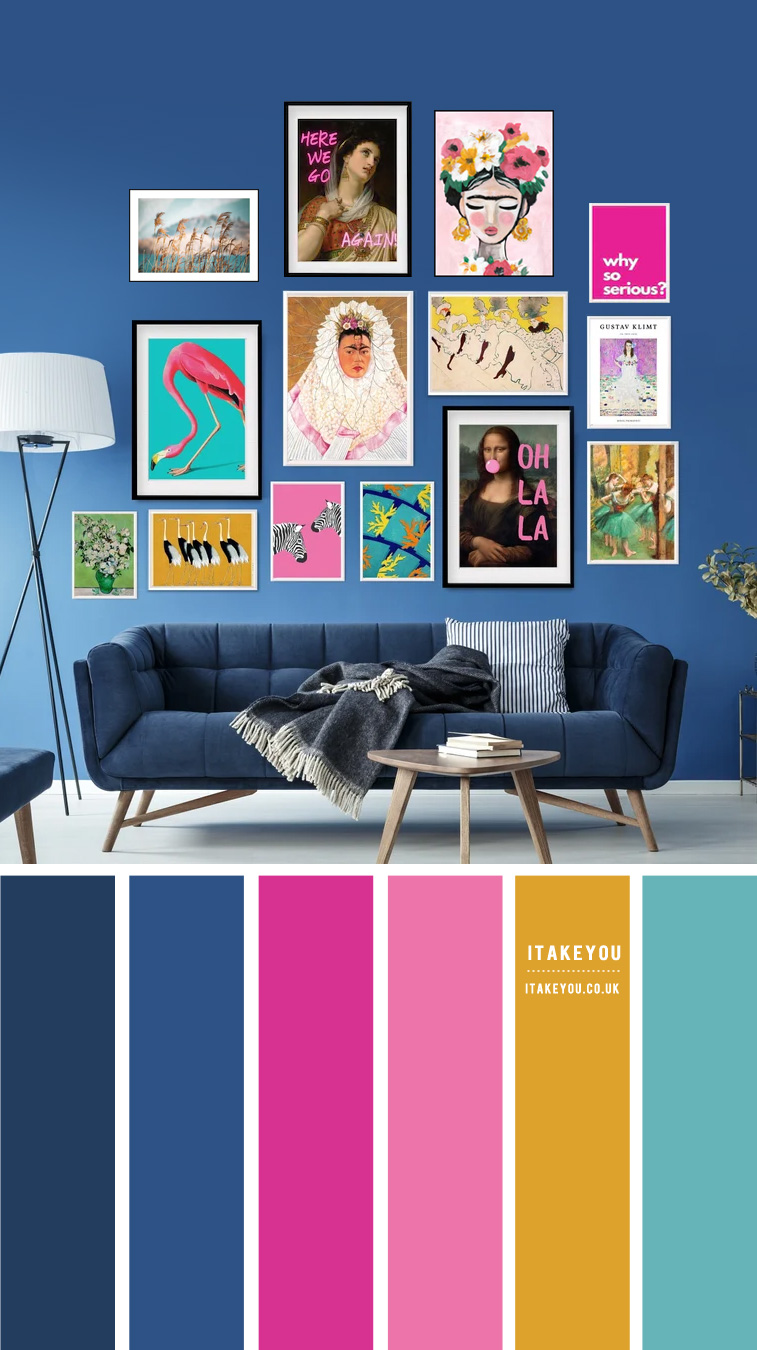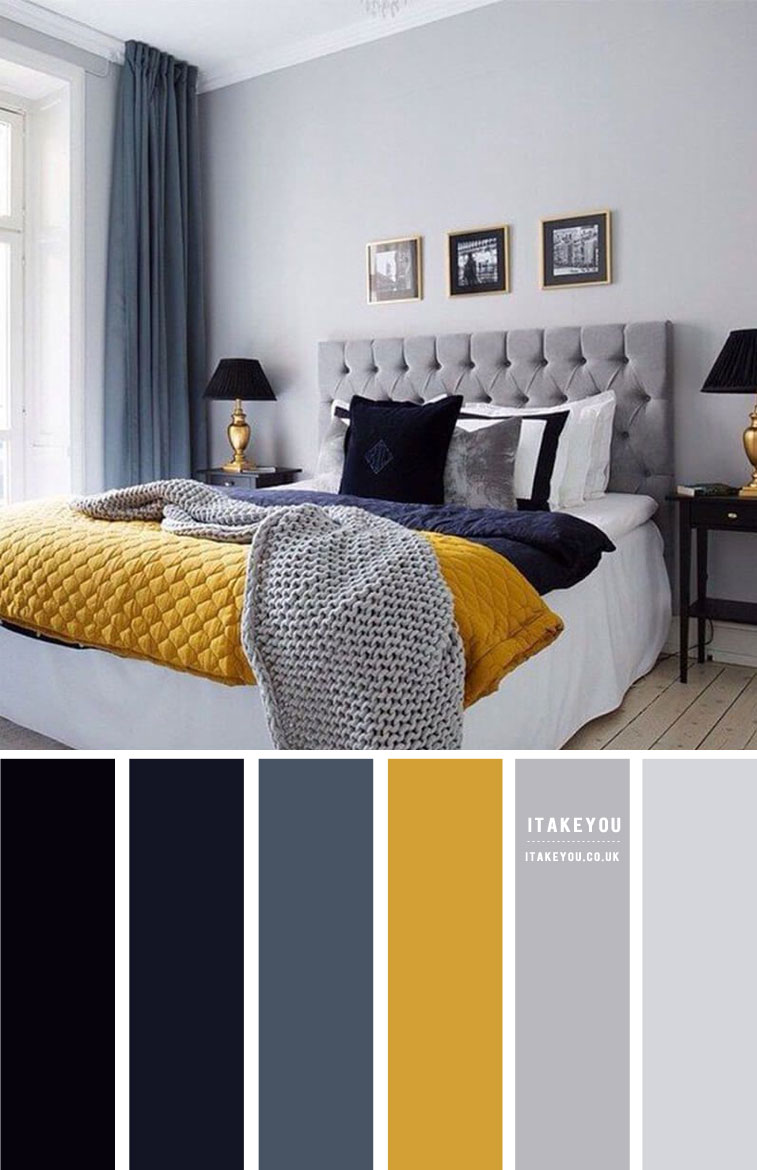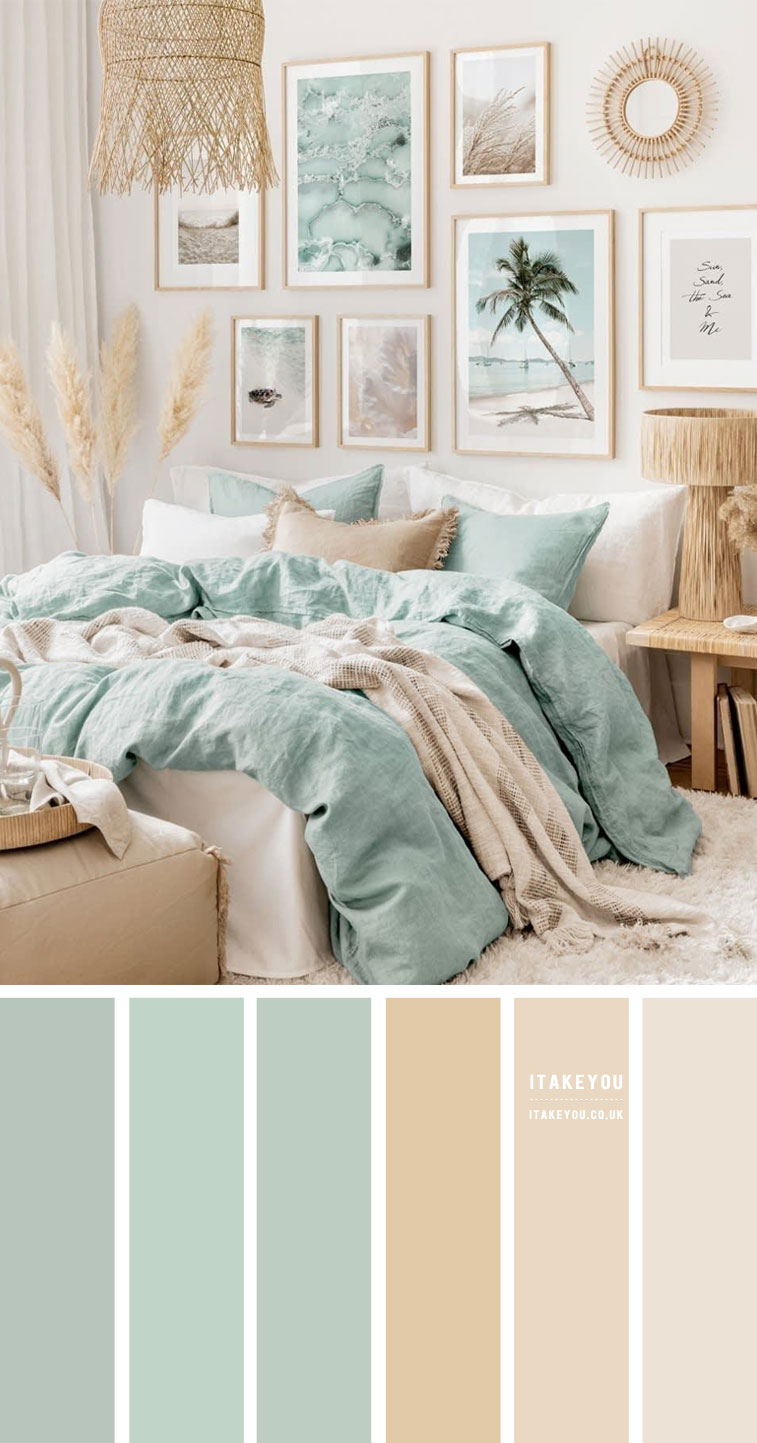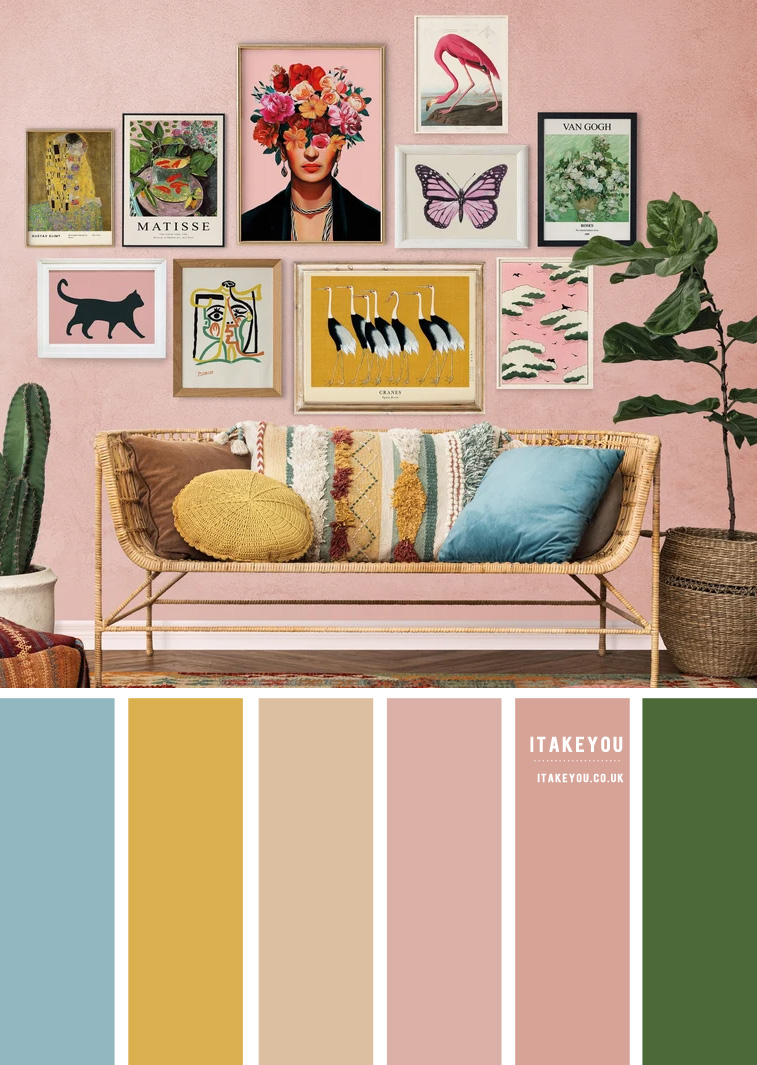Neutral Bedroom
If you are landing in this post, we assumed you are looking for a neutral bedroom. You certainly come into the right place. This post will explain to you how to use neutrals in bedrooms + how to use neutrals in other projects. Also if you like shades of neutrals we thought you might like to see our previous post, a neutral bedroom in light green and beige.
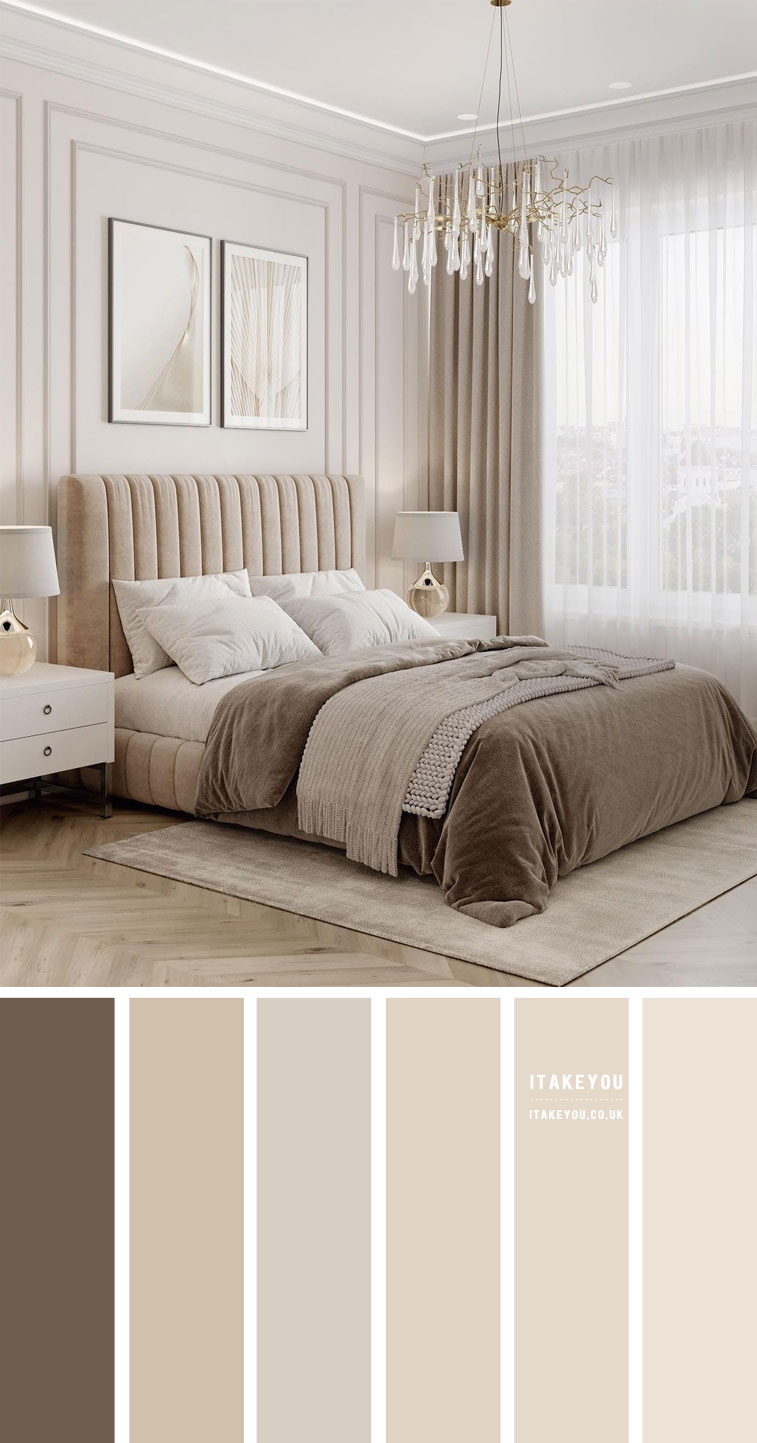
How To Use Neutrals in Bedrooms
A soft neutral bedroom can create a peaceful and calming environment that promotes relaxation and restful sleep. Soft neutrals are a popular choice for bedrooms as they can help to create a tranquil and serene atmosphere. In this colour palette, shades of soft neutral are used in many areas such as curtains, walls, rugs, and bedding in different shades of neutrals.
Here are some tips on how to use neutrals in a bedroom:
Choose a Soft Neutral Colour Palette:
Soft neutrals include shades of beige, taupe, ivory, pale gray, and dusty rose. Choose a colour palette that includes several shades of soft neutrals to create a calming space. For example, you might choose beige walls, ivory bedding, and a pale grey rug.
Layer Textures and Patterns:
To add interest and depth to a soft neutral bedroom, incorporate different textures and patterns. For example, you might layer a wool rug over a sisal carpet, or add a textured throw blanket to the foot of the bed. Choose patterns that complement the soft neutral colour palette, such as a subtle floral or geometric print.
Use Soft Lighting:
Soft lighting can help to create a relaxing and soothing atmosphere in a bedroom. Use a combination of ambient, task, and accent lighting to create a layered and welcoming space. For example, you might use a soft bedside lamp, a dimmer switch on overhead lighting, and accent lighting to highlight artwork or decorative objects.
Add Natural Elements:
Incorporating natural elements into a soft neutral bedroom can create a sense of calm and tranquility. Use plants, flowers, or natural materials like wood or stone to bring a sense of the outdoors into the space.
Emphasize Comfort:
A soft neutral bedroom should be a comfortable and welcoming space that promotes restful sleep. Choose bedding that is soft and cozy, and add pillows and throws for extra comfort. Use a thick, plush carpet or rug to add warmth and softness underfoot.
A soft neutral bedroom can create a relaxing and tranquil environment that promotes restful sleep. To create a relax and calming space, choose a soft neutral colour palette, layer textures and patterns, use soft lighting, add natural elements, and emphasize comfort. Incorporating different shades of soft neutrals into various areas of the room, such as curtains, walls, rugs, and bedding can create a soothing and cohesive space that promotes a sense of calm and relaxation.
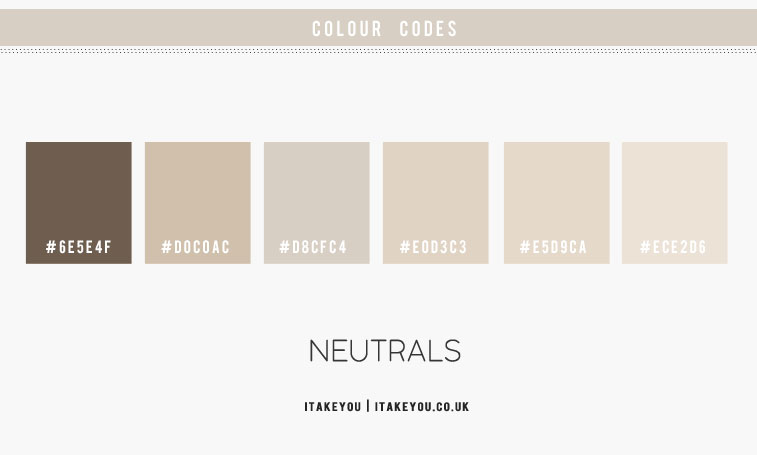
Soft Neutrals
Soft neutrals are a family of colours that are muted, subtle, and understated. They are often associated with calmness, tranquillity, and serenity, making them a popular choice for creating peaceful and relaxing environments. Soft neutrals are versatile and can be paired with a wide range of other colours, making them a great choice for any style of decor.
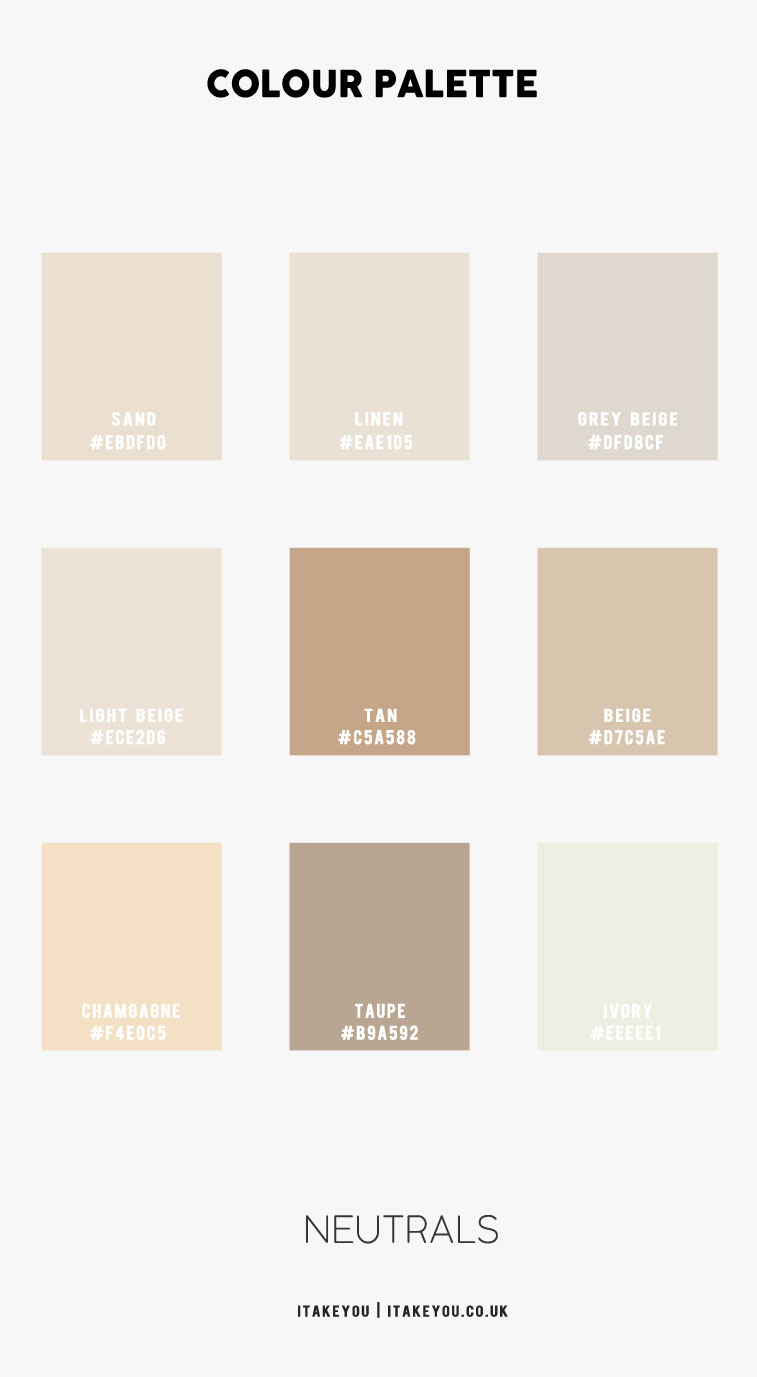
Some examples of soft neutrals include:
- Beige – a warm, muted shade of tan that is often used as a neutral base for other colours.
- Taupe – a grayish-brown colour that has a soft, soothing quality.
- Ivory – a warm, off-white colour that is associated with elegance and sophistication.
- Pale gray – a soft, cool-toned gray that is calming and soothing.
- Dusty rose – a muted pink colour that has a soft, romantic feel.
Soft neutrals can be used in a variety of ways in home decor. They can be used as a base colour on walls, furniture, and textiles, or they can be used as accent colours to add depth and interest to a room. Soft neutrals can also be used to create a monochromatic colour scheme, where several shades of the same neutral colour are used together to create a relax and calming space.
When choosing soft neutral colours for your home, it’s important to consider the lighting in the room. Some soft neutrals may appear more yellow or pink under warm lighting, while others may appear more blue or green under cool lighting. It’s a good idea to test your chosen colours in the room and lighting conditions where they will be used to ensure that they look the way you want them to.
Soft neutrals are a timeless and versatile choice for home decor. Whether you’re looking to create a relaxing retreat or an elegant and sophisticated space, soft neutrals can help you achieve your desired look and feel.
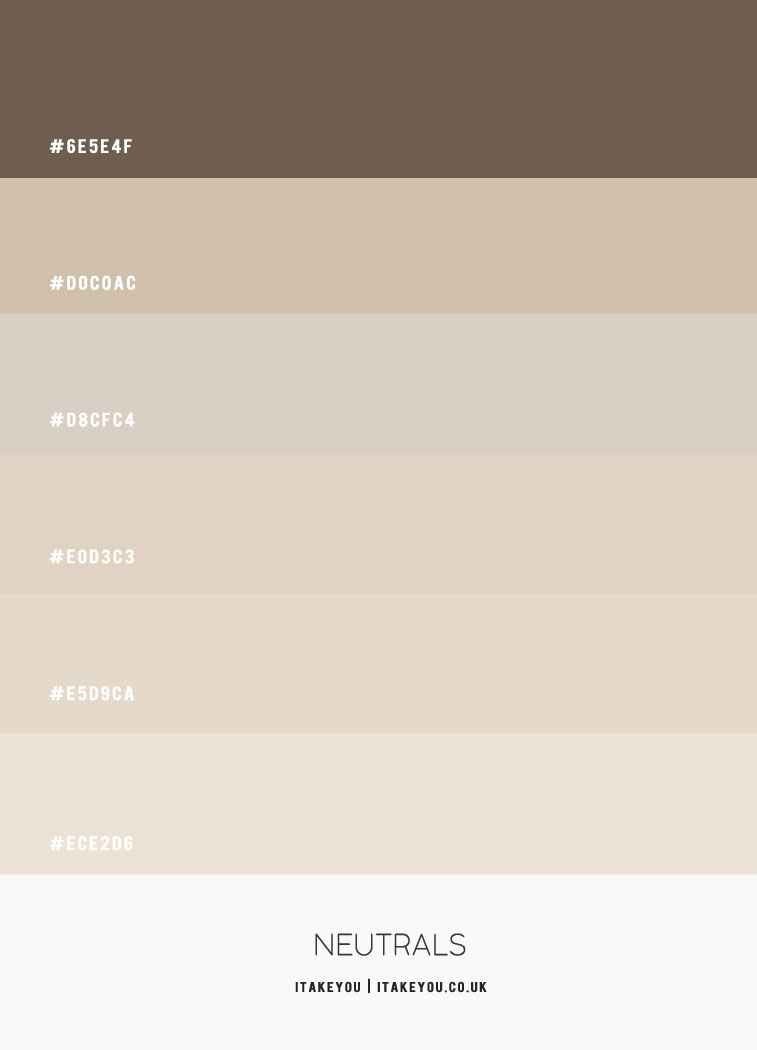
Neutrals are timeless
Neutrals are incredibly versatile colours that can be used in a wide variety of contexts. They are typically muted and understated, and can be paired with a wide range of other colours to create different moods and aesthetics. Here are some of the different ways that neutrals can be used:
- Home Decor: Neutrals are a popular choice for home decor, as they provide a neutral base that can be paired with a range of other colours and textures. They can be used on walls, floors, furniture, and textiles, and can help to create a relax and calming space.
- Fashion: Neutrals are a classic choice in fashion, as they are timeless and versatile. They can be used as a base for a variety of different outfits, and can be dressed up or down depending on the occasion. Some popular neutral fashion colours include black, white, gray, beige, and navy.
- Graphic Design: Neutrals are a popular choice in graphic design, as they can be used to create a minimalist and modern aesthetic. They can be used as a background colour, or as a base for typography and other design elements.
- Art: Neutrals are often used in art as a way to create contrast and depth. They can be used to create shadows and highlights, or as a background for other colours.
- Landscaping: Neutrals are also used in landscaping to create a natural and organic aesthetic. Brown and green neutrals can be used to create a naturalistic garden, while gray and beige neutrals can be used to create a more minimalist and modern landscape.
Neutrals are a versatile and timeless choice that can be used in a wide range of contexts, from home decor and fashion to graphic design and art. They provide a neutral base that can be paired with a range of other colors and textures, and can be used to create a variety of different moods and aesthetics.
Are you going to use neutrals in your upcoming project?
